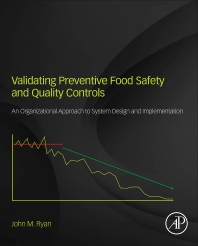Product Safety Begins With the Workforce

What key factors does the U.S. dairy industry depend on to deliver safe dairy products? There could be many answers, but the predominant factor is an educated, motivated and well-trained workforce. This factor can overcome aging equipment and facilities. Yet, do we really know the work force in our dairy plants well enough to provide them with the resources and motivation to consistently deliver safe milk, cheese, ice cream, cultured and powdered dairy products? Who works in dairy plants today?
If you ask a dairy plant manager, production or quality assurance supervisor, human resource director or their corporate counterparts, the answer is usually Maria, Tom, Jose or Diane. Many supervisory staff do not understand the broader group dynamics that can drive product safety and quality as well as increase production.
Four main groups make up our workforce. An analysis of these groups can allow plant management to focus the resources and tools needed to improve product safety.
1. Builders, also called the Greatest Generation, are retiring and when they leave, their technical on-the-job skills will retire with them.
2. Baby Boomers(born between 1945-1962) are present in reduced numbers in the dairy industry, partly because of the consolidations that occurred during the late 1990s-2001. This is the first “Me” generation. Boomers will not admit to growing old, they expect work to be an adventure and they tend to be optimistic and loyal in personal relationships and with their employers. Challenges working with this group include conflict avoidance (“I’m okay, you’re okay”), a tendency to be more driven by peer pressure and a focus on process over results. Boomers can be judgmental and sensitive to feedback. Their favorite saying is “no problem.”
3. Generation X (1963-1980) are the first children of the Boomers and were the original latch-key kids. They are less optimistic than the Boomers, but are more accepting of diversity in gender, economic class, religion and race. They are often children of divorced parents. Their lives are characterized by change, which may explain their need for instant gratification. Unlike their parents, who challenged leaders with an intent to replace them, Generation Xers tend to ignore leaders.
Yet a 2011 publication, “The Generation X Report,” finds that the generation is educated, active, balanced, happy and family-oriented. The study dispels the slacker, disenfranchised stereotype often associated with Gen X. This generation is skeptical of authority and tends to not respect hierarchy, status or title. Generation Xers seek work-life balance and prefer an informal, fun workplace. Characteristics of the Gen X workplace would include emphasis on self-reliance, projects assigned to individuals or small teams, minimal supervision and measurable goals or benchmarks. This generation is not interested in spending hours in meetings; instead the Xer demands an informal work atmosphere, self-reliance and high productivity. He or she prefers to complete tasks as quickly as possible to free up more personal time. Their favorite saying is “no fear.”
4. Generation Y (1981-2001) was the first generation where the number of single-parent families and two-parent families were almost equal. They are also the first generation where the price of a college education has become a significant problem and where their career-earning potential may be less than prior generations. While this group may be present in lower numbers in the dairy plant workforce, it is important to understand they tend to be cynical and distrustful of leaders/supervisors who do not respect them.
They are more likely to switch jobs, and tend to be team players (“No Child Left Behind” educational philosophy). They do demonstrate some individualistic tendencies that result in less uniformity in group characteristics because of geography, ethnicity, social and economic conditions. They clearly are more tech-savvy than prior generations and more comfortable with advanced processing technology, such as programmable PLCs and computers. Generation Y has a strong desire to be viewed as individuals; 40% have tattoos. Supervisors are most effective if they use the “coaching” approach. Their favorite sayings are “whatever” and “I want it right now.”
Communicating with a multigenerational workforce
At work, generational differences can affect everything, including recruiting, building teams, dealing with change, motivating, supervising and increasing productivity. Research indicates that people communicate based on their generational backgrounds. Each generation has distinct attitudes, behaviors, expectations, habits and motivational buttons. Learning how to communicate with the different generations can eliminate many major workplace disruptions that cause food safety and quality problems as well as decreases in production.
In summary, a key to training and managing these four groups to attain consistent product safety, quality and production targets is to involve them in the plant information flow and provide feedback and opportunities for their input into operational decisions, particularly if it affects their job responsibility. Avoid training boredom (meaning, you tend to use the same materials and trainers year after year).
A positive work environment with managers and supervisors who coach and provide overall direction will motive all four generations to perform at a higher level.
Looking for a reprint of this article?
From high-res PDFs to custom plaques, order your copy today!






